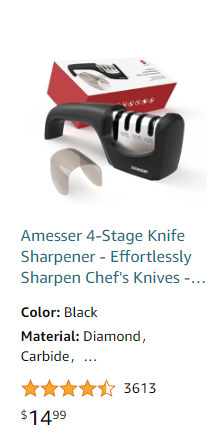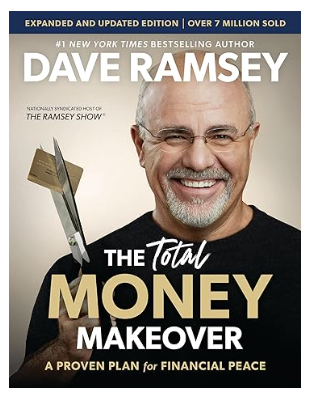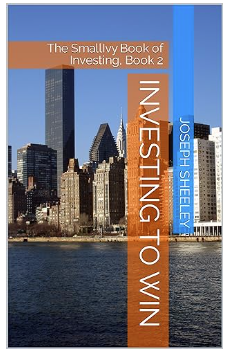
Photo by Eno Eltora on Pexels.com
" data-orig-size="867,1300" data-image-title="low angle photography of a person walking up a stairs" data-orig-file="https://smallivy.com/wp-content/uploads/2024/07/pexels-photo-3313808.jpeg" data-image-description="" class="wp-image-24459" width="867" data-medium-file="https://smallivy.com/wp-content/uploads/2024/07/pexels-photo-3313808.jpeg?w=200" role="button" data-permalink="https://smallivy.com/2024/08/03/pay-yourself-first-and-grow-your-wealth/pexels-photo-3313808/" alt="" height="1300" data-image-meta="{"aperture":"0","credit":"","camera":"","caption":"","created_timestamp":"0","copyright":"","focal_length":"0","iso":"0","shutter_speed":"0","title":"","orientation":"0"}" data-large-file="https://smallivy.com/wp-content/uploads/2024/07/pexels-photo-3313808.jpeg?w=683" tabindex="0" />Photo by Eno Eltora on Pexels.comPersonal finance advice can get really complicated. Listen to many podcasts or read a few blogs and you’ll hear about dollar cost average investing in stocks, dividends, percentages in this fund or that, creating elaborate budgets, and even diet and exercise and how they affect your financial future. Seems like a lot to learn, causing many people to just tune out.
What if you want to improve your finances, but don’t want to learn a lot about it and don’t want to spend a lot of time on it? What if you don’t want to pull together a budget and do all of the complicated things needed to track your spending so that you can follow that budget? It really isn’t that important to understand everything if you just do the things that cause you to do the things that will grow your wealth. Luckily, there is an easy way to get the money you need to save and invest. It is called “Pay yourself first.” In this article we’ll describe the technique. We’ll then lay out a plan for what to do with the money you’re saving to build your wealth and become rich.
(Note, this site contains affiliate links. As an Amazon Associate I earn from qualifying purchases. When you click on an affiliate link and buy something, The Small Investor will get a small commission for the referral. You are charged nothing extra for the purchase. This helps keep The Small Investor going and free. I don’t recommend any products I do not fully support. If you would like to help but don’t see anything you need, feel free to visit Amazon through this link and buy whatever you wish. The Small Investor will get a small commission when you do, again at no cost to you.)

Your net worth
The goal in financial management when you’re getting started is to grow your net worth. This involves first getting on good financial ground where you aren’t going into debt and then actually putting money into investments so that you can grow your net worth. Once your net worth is large enough, you can use that wealth to generate more income, so that you can spend the money you need but your investments will replenish whatever you spend. At that point, as long as you don’t spend too much – more than your investments can replenish – your net worth will remain at the same level or even grow. It’s like a mint plant where you can prune some off and use it but it will grow back and grow larger if you don’t take too much at a time!
Your net worth is the amount you have in money and possessions minus what you owe. For example, if you have a $15,000 car, $2000 in your checking account and $1000 worth of furniture and owe $12,000 on the car and $4000 on credit cards, your net worth is:
Net worth = $15,000 (car) + $2000 (checking) +$1000 (furniture) – $12,000 (car loan) – $4000 (credit cards) = +$2000
Everyone has some sort of net worth. For many people it is a negative number until they are way into their 30s, or even their 40s or fifties.
The first step to financial prosperity is to taking some of your income and using it to build your net worth. When you do this, you are paying some of your money to yourself instead of just paying out all of your money to other people. Instead of $50,000 coming in each year and $50,000 going out, maybe you put $5000 into savings. When you use $5000 to build your net worth, you become $5000 richer than you were before your did so.
Make it a goal to save 20% of your pay to build your net worth
Most people, if they try a little, will be able to find 20% of their take-home pay and use it to build their net worth. So, if you get a check for $2500, take $500 and put it into your net worth. Get a bonus of $10,000 at the end of the year? Put $2000 into your net worth. Every time you do this, your net worth is growing, which means you are getting richer. If you make $50,000 per year, you’ll become $10,000 richer each year, meaning your net worth will increase by $100,000 over the next ten years. Make $100,000 per year? You’ll be $1 M richer in ten years.
The issue is that many people want to save and invest money, but they don’t. They try to pull together a budget, but they get busy or things come up and they blow the budget. They plan to put money away, but then they end up spending everything each month. Is there an easy way to save 20%?

How Pay Yourself First works
A great way to save the money you need without tracking a budget closely is to pay yourself first. In this technique, you put money you plan to save into your savings right when you get your paycheck, then pay your bills and buy the things you really need, then spend other money as you wish. This makes it easy to save up the money you need to build your net worth.
Here’s how it works:
- Have a special account like a savings account where you put your savings.
- Each time you get paid, put 20% into your special account.
- Next, pay the bills you owe that are due before you get paid again.
- After paying your bills, buy the things you need between now and the next paycheck to live like groceries and gas for your car.
- Once you’ve bought the necessities, feel free to spend the rest however you like.
Notice what you’re doing:
- You put away the 20% before you did anything else. This means that you can spend the rest of the money without worrying about it because you have saved the money you need to meet your goal.
- You then paid bills next. This means you covered all of your obligations and won’t miss a payment.
- You then bought the things you really need. You covered the necessities so you won’t need to worry about having food to eat or the clothing you really need.
- After that, you can just spend the rest.
By spending in this way, you can spend the rest without worry about it. You know that you’ve met your savings goal and bought all of the things you need.
What if you run out of money?
You may find that sometimes you run out of money before you get through buying the things you need. If you find you can’t cover all of your bills and basic needs with the money you have after paying yourself, you can raid you savings. You probably will need to do this fairly often when you first start. But note when you do that you need to change things to meet your savings goal.
When this happens, look for ways that you can cut your spending or save money in the future. Also, look for ways you can increase your income. Keep working at it until you rarely or never need to raid your savings. It is a process and it will take time. But eventually you should find that you can pay for everything without raiding your savings. Then, see if you can get into the position where you have more money left over once you’ve bought everything you need to spend as you wish. If that gets to be so much that it’s more than you need, you can up your savings rate.

What do you do with the money you’re saving?
After you’ve built up a good savings in your special account, it is time to start doing things that will increase your net worth. There are three ways you can pay yourself and increase your net worth. They are to:
- Save cash or buy other things that hold their value and can be resold
- Pay down debt
- Buy assets.
Saving cash obviously causes your net worth to increase since you’ll see your savings account balance increase each month. If you’re sticking your money in a mason jar, you’ll see your stash increase with time. You can also buy things that you could resell or use later like gift cards that don’t expire, furniture that holds value, or bars of gold. Of course, if you don’t put your savings in the bank there is a cost to protect your money and things, and possibly some maintenance cost like keeping a collectible car running.
Paying down debt actually reduces the amount of money you need to spend each month, so doing so increases the amount of money you have available to do things with. If you actually pay off a debt in full, for example, if you pay off a car and get rid of the car payment, you eliminate the interest payment. This leaves more money available to do other things. This might mean more money to go out to eat or go on vacation. It might mean buying things you need for your family. Or maybe it will mean putting even more money away to make your net worth increase faster.
When you are paying down a debt but don’t pay it off, you won’t see any cash freed up (you won’t see your mortgage payment go down even if you pay an extra $10,000 one month). But as long as you’re paying more than the interest payment, you are still increasing your net worth with each payment. Because the interest you pay each month is calculated based on the average amount you still owe through the time period, even if you pay down a debt but don’t pay it off, you will be reducing the amount you’re paying in interest as you make payments.
For example, if you owe $300,000 on a home and are making $2500 payments each month, at the beginning of the loan you may owe $2,000 in interest at the start of each month, so with each payment you’re only reducing the amount you owe by $500 even though you are paying $2500. At the end of the loan when you only owe $50,000, the interest is calculated on $50,000, so you only owe $300 in interest each month. This means that you are increasing your net worth by $2200 each time you make a $2500 payment later in the loan.

(If you’d like to learn more about how to decide how much you should put in different types of assets, Sample Mutual Fund Portfolios gives lots of information and examples of how to make allocations for all sorts of different goals, including retirement.)
Buying assets
Buying assets means that you buy things (or invest in things) that actually pay you money and increase your income. For example, if you buy a home and rent it out, you will now receive income from the rents you collect. You will also see expenses increase since you’ll need to maintain the property and pay property taxes and so on. But assuming you do a good job of picking a home, keep your costs in line, and charge enough in rent, you should see an income stream. You will also likely see the sale price of the property increase with time. If you have bought in an area that sees homes become more valuable, this will be an increase in your net worth since you can sell the home and have more money than you paid for it.
The effects of inflation can distort the actual increases in net worth you get from holding real estate. If the area has not become more desirable since you bought the rental home, you may only see an increase in value due to inflation. In this case you will not be able to buy anything more with the money you get from the sale as you could have with the money you put into buying the home in the first place. For example, with inflation at 3%, if you sell a place 24 years after you bought it and get twice what you paid for it, you actually have made nothing and are just seeing the effects of inflation. Often the profit you get from selling a home is a combination of both.
Another popular asset to buy is common stocks. Here you are buying an ownership stake in publicly traded companies, although often a very small stake. You could own a portion of Google, Amazon, Walmart, or other companies, meaning that you get to profit from the sales and profits that they make. Most small investors buy these assets by purchasing shares of mutual funds and their cousins, ETFs. These make it really easy to invest and reduce your risk by spreading out your investment among many companies each time you buy a share.
Just like real estate, when you hold stocks you will see income in the form of payments (called dividends) and increases in the value of the shares you own. With stocks, most of the income you will see will be because of the shares becoming more valuable. This is the opposite of real estate where most of the income is typically from the rents you charge. The kind of income you receive will affect the taxes you owe on that income, but at this point just worry about investing to get income. As you start to see higher and higher income from investing, you can hire an accountant or financial planner to help you figure out how to reduce taxes.

SmallIvy Book of Investing: Book1: Investing to Grow Wealthy
A 7 step plan to wealth
Here is a specific plan to follow to get yourself on good financial footing and then grow your net worth:
- Save until you have 3 month’s worth of expenses in your savings account. This is your emergency fund.
- Keep saving until you have enough cash to pay for the odd expenses that come up each year. These are things like car tires, car insurance bills, home maintenance, and medical bills. If you have a job that causes your income to vary, this money should also cover your slow months. Save until you never need to dip into your emergency fund (except under a true emergency like a job loss or ER visit).
- Once you have your savings built, join your work retirement plan (like a 401k) if there is one. Direct 10% of your income to it. This leaves another 10% if you’re saving 20% each month.
- Use the other 10% to pay down debt, starting with credit cards and other high-interest debt. Pay off everything except for your home mortgage.
- Save up for a home down-payment and buy a home if you don’t have one already. Get rid of your rent payment and start building up equity.
- Start investing in stocks through a brokerage account or a mutual fund company. This is where you can really start to build up wealth.
- Reinvest most of the money you make through your investments, but use some of it to pay for things like new cars and home improvements instead of taking on debt.
Want to learn the secrets to investing and really turbocharge your returns? Check out the second book in The Small Investor series, Investing to Win. This book presents 40 years of investing experience. Someone starting with zero knowledge of investing and the stock market could take this book and learn all that they needed to invest and do well. It would also be useful to someone who has invested and traded stocks for a while but who is really not getting the kind of returns desired.

Investing to Win
Have a question? Please leave it in a comment. Follow me on Twitter to get news about new articles and find out what I’m investing in. @SmallIvy_SI
Disclaimer: This blog is not meant to give financial planning or tax advice. It gives general information on investment strategy, picking stocks, and generally managing money to build wealth. It is not a solicitation to buy or sell stocks or any security. Financial planning advice should be sought from a certified financial planner, which the author is not. Tax advice should be sought from a CPA. All investments involve risk and the reader as urged to consider risks carefully and seek the advice of experts if needed before investing.
